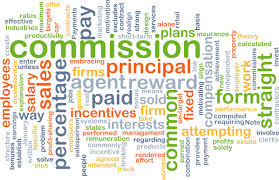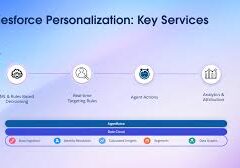Showing up to work is one thing, but bringing genuine enthusiasm to the job is another. How can you motivate your team to meet and exceed their goals?
Sales incentives are a powerful tool to ignite motivation, but they aren’t one-size-fits-all. Figuring out the best structure for your team can lead to more energized, results-driven reps.
In this Tectonic insight, we’ll explore different types of sales incentives, how they motivate teams, and best practices for implementing an effective incentive program that drives real results.
- What are sales incentives?
- Types of sales incentives
- How sales incentives motivate your team
- 10 effective sales incentives
- Best practices for implementing sales incentives
- Measuring the impact of sales incentives on performance
What are Sales Incentives?
Sales incentives are rewards given to sales reps, in addition to their base compensation, for exceptional performance. This often means hitting or exceeding sales targets. While financial bonuses are the most common, incentives can come in many forms, all designed to motivate specific behaviors or outcomes.
Types of Sales Incentives
Here are five common types of sales incentives to consider:
- Role-Specific Sales Incentives
These are tailored to each role. For example, a Sales Development Rep (SDR) may earn incentives for booking more meetings, while an Account Executive might receive bonuses for closing deals. Tailored incentives ensure all team members stay motivated, regardless of their role. - Split Sales Incentives
Multiple team members contribute to deals. Split incentives reward everyone involved in a successful sale, encouraging collaboration rather than competition. - Presales Incentives
Sales cycles often involve multiple steps. Presales incentives reward team members for completing key tasks early in the sales process, motivating reps even during longer cycles. - Omnichannel Sales Incentives
Today’s reps interact with prospects across multiple channels. Omnichannel incentives track all touchpoints and ensure every contributing rep is rewarded. - Analytics-Based Sales Incentives
Data-driven incentives reward behaviors proven to lead to results, such as more calls made or follow-up emails sent, aligning performance goals with organizational priorities.
How Sales Incentives Motivate Your Team
Sales incentives help reinforce desired behaviors, offering a clear path to rewards. They provide a mutual win: your company increases sales, while reps enjoy additional rewards. Many sales professionals are naturally driven by competition, but incentives give everyone, competitive or not, something tangible to work toward.
Incentives also boost employee satisfaction, reduce turnover, and show that you value hard work. This can save your organization the cost and hassle of recruiting and onboarding new talent.
Sales Incentives That Actually Work
While money is the most popular reward, mixing in creative incentives can add excitement to your program. Consider these options:
- Sales Contests
Create competitions and offer prizes like bonuses, tech gadgets, or vacation days for top performers. - Recognitions and Awards
Publicly acknowledge high achievers. Titles like “Salesperson of the Month” or an annual “President’s Club” award with exclusive perks can motivate reps. - Stock Options
Offering stock options connects reps to the company’s long-term success and serves as an attractive cash alternative. - Extra Paid Time Off
Reward top performers with additional vacation days to help them recharge. - Team Rewards
Reward the entire team with group outings or activities, such as retreats, dinners, or fun experiences that build team spirit. - All-Expense-Paid Vacations
Offer a free trip or travel vouchers for top performers, adding an exciting, aspirational reward. - Event Tickets
Reward reps with tickets to sporting events, concerts, or other entertainment, personalizing the reward to their interests. - Gift Cards
Gift cards provide flexibility, allowing reps to choose their reward, which can be a valuable alternative to cash. - Tech Gadgets
High-value tech items like smartwatches, laptops, or tablets make great rewards, as they offer both utility and excitement. - Executive Access
Offer top performers a chance to spend time with company leaders, providing recognition and an opportunity to share feedback directly with key decision-makers.
Best Practices for Implementing Sales Incentives
To create an effective sales incentive program, keep these points in mind:
- Keep It Simple
Overcomplicating your incentive plan can confuse reps. The more straightforward the reward structure, the easier it is for them to understand what’s needed to succeed. - Listen to Your Team
Engage your team when creating or updating your incentive plan. Understand their preferences and build a structure that motivates everyone, whether they thrive on competition or teamwork. - Use the Right Tools
Technology makes incentive management easier. Tools like Salesforce Spiff streamline tracking and offer real-time insights into target achievements and payouts. - Communicate Clearly
Ensure your team fully understands the incentive plan by providing clear documentation and making it easily accessible in a centralized location. - Be Transparent
Make it simple for reps to track their progress and commissions. Transparency fosters trust and reduces the risk of dissatisfaction.
Measuring the Impact of Sales Incentives on Performance
To assess the effectiveness of your incentive program, track key performance indicators (KPIs) such as:
- Overall sales growth
- Number of new and returning customers
- Return on investment (ROI) of your incentive program
- Employee turnover rate
- Employee satisfaction levels
Sales Incentives Can Boost Morale and Performance
The key to a successful sales incentive program is simplicity and transparency. By crafting a plan that’s easy to understand and aligned with your team’s motivations, you can drive better performance and improve job satisfaction at the same time.













